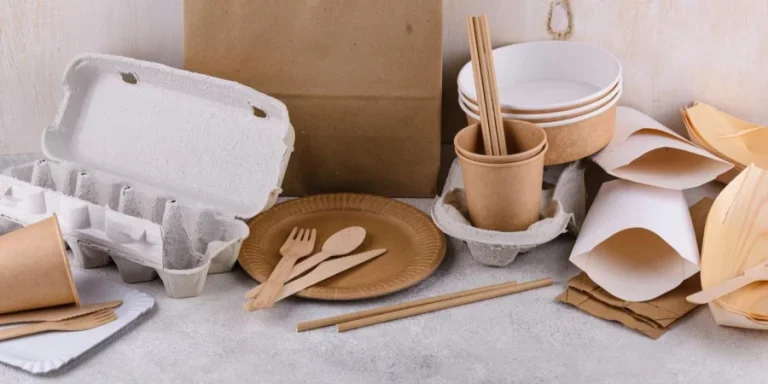Table of Contents
● Introduction
● Understanding the main types and uses of disposable dinnerware & tableware
● Market overview: Key trends shaping the disposable tableware industry for 2025
● Essential considerations for selecting the right products
● Spotlight on the best products for 2025
● Conclusion
Introduction
Disposable dinnerware and tableware have become essential tools for modern businesses, offering a perfect blend of convenience, versatility, and cost-effectiveness. In 2025, the demand for these products continues to grow as more companies seek solutions that simplify operations while maintaining high standards of presentation and quality. Whether for casual corporate events or upscale gatherings, selecting the right disposable options can enhance the dining experience, reduce cleanup time, and align with sustainability goals. Making informed choices about materials and designs is crucial to meeting specific needs and ensuring customer satisfaction in a fast-paced environment.
Understanding the main types and uses of disposable dinnerware & tableware
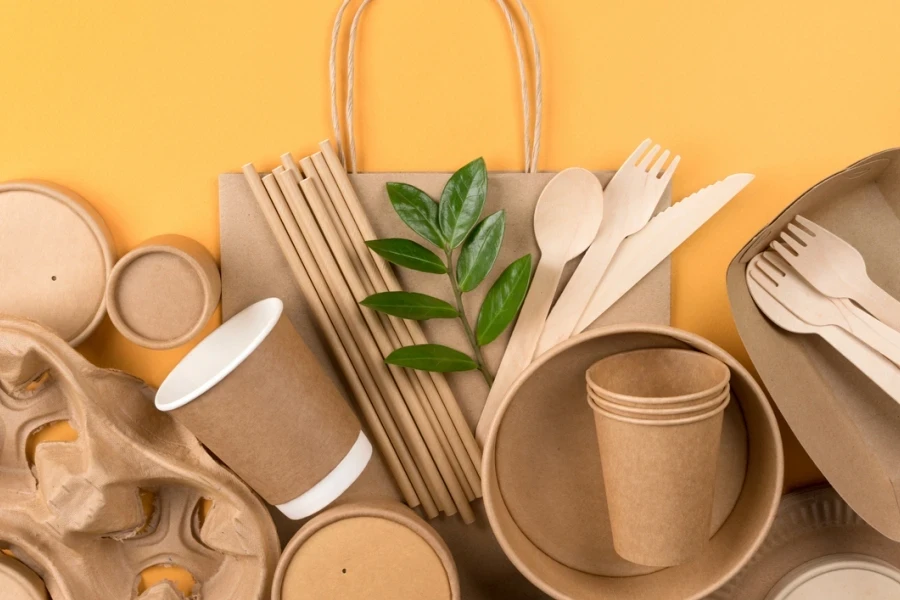
When comparing melamine, bamboo, and plastic for disposable dinnerware, each material offers distinct advantages depending on the setting and needs. Melamine stands out for its ceramic-like appearance, strength, and scratch resistance, making it ideal for upscale environments where presentation is important. However, it’s not microwave-safe and should be chosen for settings where durability and long-term use are essential. Bamboo is an eco-friendly alternative, appealing to sustainability-conscious consumers with its biodegradable and compostable nature, although its natural variations may not suit all occasions. Plastic, meanwhile, remains the most versatile, offering options that range from basic to high-end, with materials like Tritan and Polypropylene providing varying levels of durability and heat resistance. Despite environmental concerns, recyclable and compostable plastic alternatives are increasingly available.
The choice of material also depends on the usage scenario, from casual gatherings to upscale events. Plastic tableware is often chosen for casual events like picnics or corporate functions due to its affordability and practicality, especially options like Polypropylene and SAN, which are durable and cost-effective. Bamboo, with its natural aesthetic and sustainability, is favored for eco-friendly or outdoor events such as weddings or garden parties, where its rustic charm enhances the theme. Its compostable nature also simplifies cleanup, making it a practical and environmentally responsible choice.
For upscale events such as formal dinners or corporate galas, melamine and high-quality plastic options like Tritan offer the sophistication of traditional dinnerware with the practicality of disposability. Melamine’s refined look and durability make it well-suited for formal settings, while Tritan’s glass-like clarity and break resistance provide an elegant yet functional option. Both materials combine luxury with practicality, ensuring that the dinnerware enhances the event’s ambiance while remaining easy to manage.
Ultimately, the choice of disposable dinnerware should reflect the event’s theme, audience, and balance between aesthetics and practicality. By carefully selecting materials that align with these factors, businesses can elevate the overall experience while maintaining efficiency and supporting environmental responsibility.
Market overview: Key trends shaping the disposable tableware industry for 2025
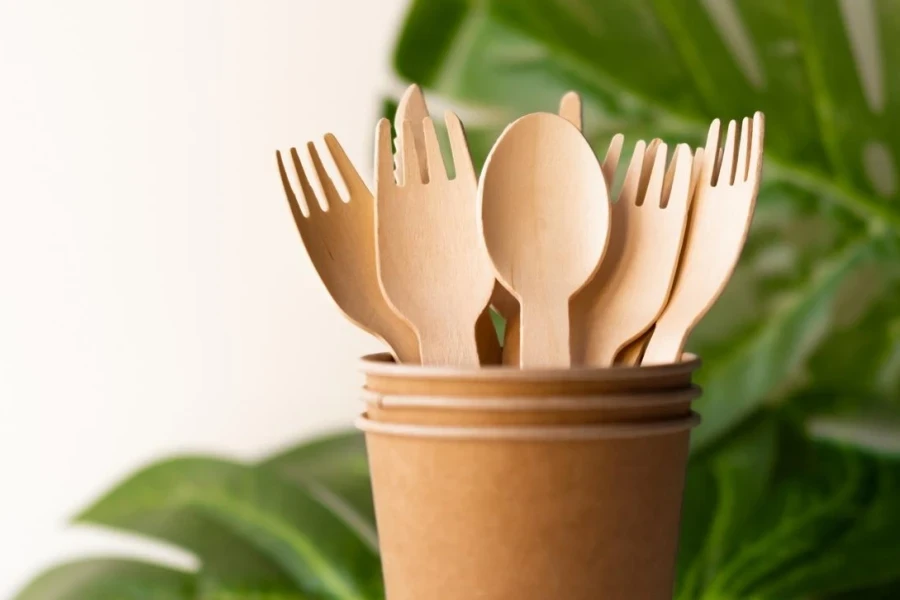
Growth Drivers: Sustainability and Innovation
The disposable tableware industry is set to grow significantly in 2025, largely driven by sustainability and innovation. As environmental concerns rise, there is increased demand for eco-friendly products made from biodegradable and compostable materials like bamboo and recycled plastics. This shift aligns with global efforts to reduce plastic waste. At the same time, innovation in product design and materials, such as advancements in biodegradable polymers, is creating durable and aesthetically pleasing alternatives that rival traditional tableware in functionality and appearance.
The global disposable tableware market is expected to grow from USD 35.35 billion in 2024 to USD 43.95 billion by 2029, at a compound annual growth rate (CAGR) of 4.45%, according to Mordor Intelligence. This growth is driven by rising demand for sustainable materials such as bamboo, bagasse, and recycled plastics, along with innovations in biodegradable polymers and eco-friendly designs. These developments align with global efforts to reduce plastic waste and meet growing consumer preferences for environmentally conscious products.
Regional Market Dynamics
Demand for disposable tableware varies across regions, shaped by local economies, cultural practices, and regulations. North America leads the market, fueled by its robust food service industry and growing focus on sustainable products. Europe follows, driven by strict environmental regulations that favor biodegradable materials, pushing businesses to adopt alternatives like bamboo and sugarcane-based products.
Asia-Pacific is the fastest-growing region, with emerging markets like China and India seeing rising use of disposable tableware due to urbanization and increased disposable income. While the Middle East and Africa are experiencing growth in disposable tableware due to expanding tourism, the adoption of eco-friendly options is slower due to cost concerns. As global trends shift, businesses must stay aligned with regional dynamics and preferences to meet the growing demand for sustainable and innovative tableware.
Essential considerations for selecting the right products

Balancing Quality, Cost, and Sustainability
When selecting disposable tableware, businesses must balance quality, cost, and sustainability. Durability is essential, particularly for items that will endure heavy use, with materials like melamine and high-quality plastics offering a good balance of strength and aesthetics. While cheaper options may seem cost-effective, they often compromise on durability, whereas investing in eco-friendly materials like bamboo or bioplastics can result in long-term savings. Sustainability is increasingly important as businesses look to reduce their environmental footprint, making biodegradable and compostable options appealing for both financial and ecological reasons.
Regulatory and Safety Standards
Compliance with regulatory and safety standards is crucial when choosing disposable tableware. Regulations, especially regarding food safety and environmental impact, dictate material choices, with authorities like the FDA in the U.S. and the EU setting strict guidelines. Businesses must ensure their products are free from harmful chemicals and meet local recycling and labeling regulations. Maintaining compliance not only protects customers but also helps businesses avoid legal issues and build trust in the marketplace through certifications and third-party testing.
Brand Reputation and Consumer Feedback
Brand reputation and consumer feedback are critical in choosing disposable tableware. Trusted brands that have established quality standards are often preferred for their reliability. Customer reviews provide real-world insights into the performance of products, revealing potential issues or benefits that may not be obvious from descriptions. By analyzing feedback, businesses can make informed decisions, selecting products that consistently meet customer expectations while avoiding those that fall short in durability or functionality.
Spotlight on the best products for 2025
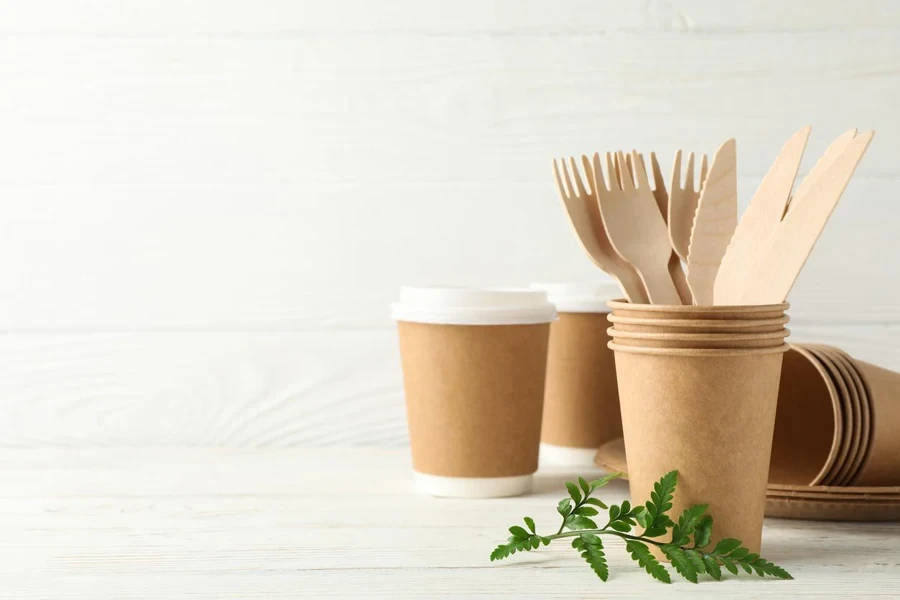
Top-rated Melamine Dinnerware Sets
Melamine dinnerware remains a top choice for its durability, ceramic-like appearance, and scratch resistance, making it ideal for both everyday use and special occasions. The best Melamine sets in 2025 offer a variety of modern designs and colors, catering to different aesthetic preferences while providing long-lasting performance. Although not microwave-safe, Melamine is dishwasher-safe, stain-resistant, and retains its vibrant colors, making it a cost-effective option for businesses prioritizing style and durability.
Best Bamboo Disposable Plates: Eco-friendly Choices
Bamboo disposable plates are gaining popularity as a sustainable alternative to plastic and paper plates. These biodegradable plates offer both functionality and environmental responsibility, with top manufacturers ensuring their products are sturdy enough for hot and cold foods. The natural texture of bamboo adds a rustic yet elegant touch to any setting, while certifications like BPI provide assurance of their environmental standards. Although compostable, the time for complete decomposition varies depending on local conditions.
Innovative Plastic Dinnerware: Balancing Style and Function
Plastic dinnerware continues to evolve with innovative designs that combine style and function. Advanced materials like Tritan and Polycarbonate offer durability, scratch resistance, and a high-end appearance, making them suitable for both casual and formal settings. Many sets now mimic the elegance of glass while maintaining the lightweight, shatterproof qualities of plastic. Increasingly, manufacturers offer recyclable and reusable options, addressing environmental concerns while delivering long-term value and durability.
Conclusion
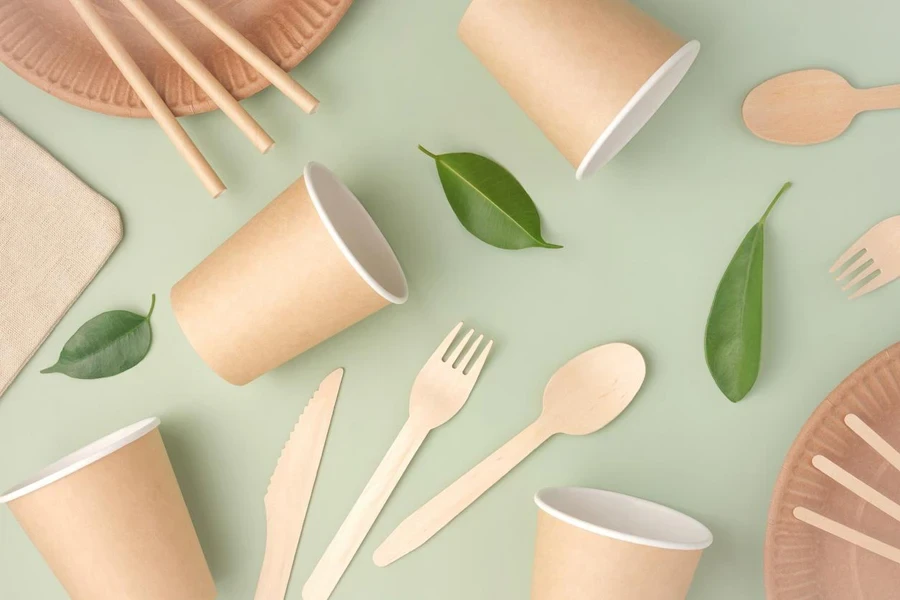
Selecting the right disposable dinnerware and tableware for 2025 involves carefully balancing quality, cost, and sustainability while keeping an eye on market trends and consumer preferences. From the durability and design appeal of Melamine sets to the eco-friendly benefits of bamboo plates and the innovative advancements in plastic dinnerware, businesses have a wide range of options to meet diverse needs. By focusing on products that align with both operational goals and environmental responsibilities, companies can make informed choices that enhance their offerings and resonate with a growing demand for sustainable, high-quality tableware solutions.
